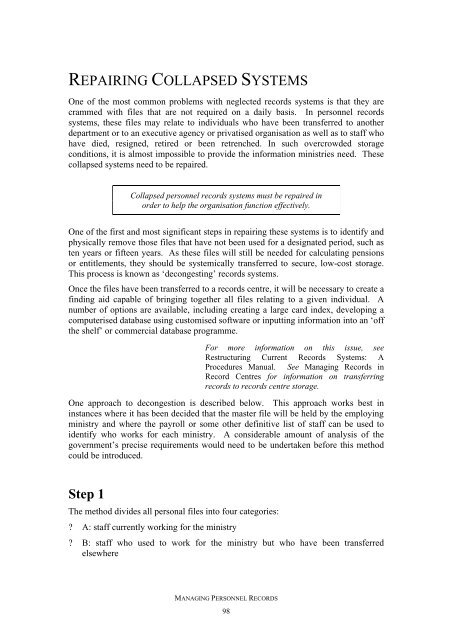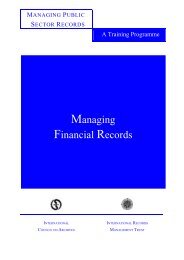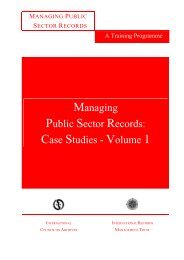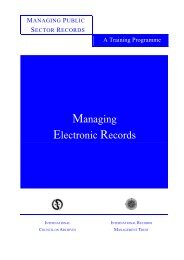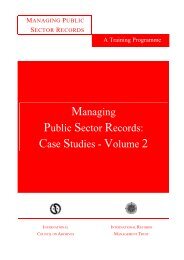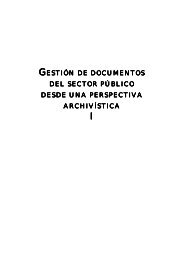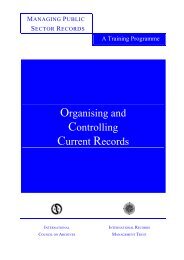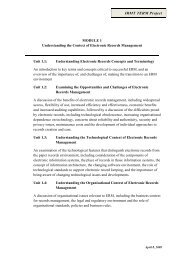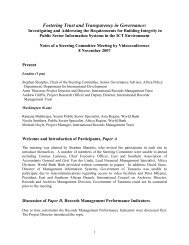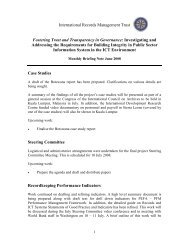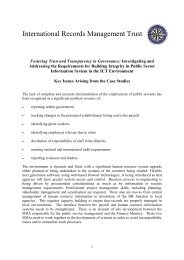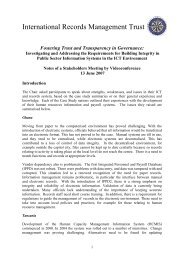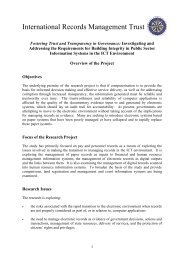Managing Personnel Records - International Records Management ...
Managing Personnel Records - International Records Management ...
Managing Personnel Records - International Records Management ...
You also want an ePaper? Increase the reach of your titles
YUMPU automatically turns print PDFs into web optimized ePapers that Google loves.
REPAIRING COLLAPSED SYSTEMS<br />
One of the most common problems with neglected records systems is that they are<br />
crammed with files that are not required on a daily basis. In personnel records<br />
systems, these files may relate to individuals who have been transferred to another<br />
department or to an executive agency or privatised organisation as well as to staff who<br />
have died, resigned, retired or been retrenched. In such overcrowded storage<br />
conditions, it is almost impossible to provide the information ministries need. These<br />
collapsed systems need to be repaired.<br />
Collapsed personnel records systems must be repaired in<br />
order to help the organisation function effectively.<br />
One of the first and most significant steps in repairing these systems is to identify and<br />
physically remove those files that have not been used for a designated period, such as<br />
ten years or fifteen years. As these files will still be needed for calculating pensions<br />
or entitlements, they should be systemically transferred to secure, low-cost storage.<br />
This process is known as ‘decongesting’ records systems.<br />
Once the files have been transferred to a records centre, it will be necessary to create a<br />
finding aid capable of bringing together all files relating to a given individual. A<br />
number of options are available, including creating a large card index, developing a<br />
computerised database using customised software or inputting information into an ‘off<br />
the shelf’ or commercial database programme.<br />
For more information on this issue, see<br />
Restructuring Current <strong>Records</strong> Systems: A<br />
Procedures Manual. See <strong>Managing</strong> <strong>Records</strong> in<br />
Record Centres for information on transferring<br />
records to records centre storage.<br />
One approach to decongestion is described below. This approach works best in<br />
instances where it has been decided that the master file will be held by the employing<br />
ministry and where the payroll or some other definitive list of staff can be used to<br />
identify who works for each ministry. A considerable amount of analysis of the<br />
government’s precise requirements would need to be undertaken before this method<br />
could be introduced.<br />
Step 1<br />
The method divides all personal files into four categories:<br />
? A: staff currently working for the ministry<br />
? B: staff who used to work for the ministry but who have been transferred<br />
elsewhere<br />
MANAGING PERSONNEL RECORDS<br />
98


